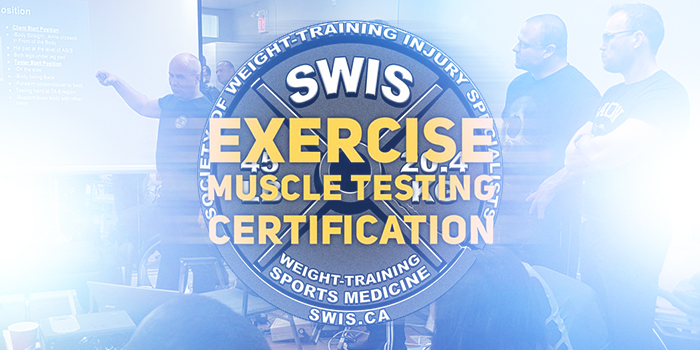
On March 25 and 26, Ken and I had the opportunity to attend Dr. Ken Kinakin’s latest and greatest certification and hands-on muscle testing workshop/certification. Dr. Ken Kinakin put on one hell of a weekend. If you aren't familiar with Dr. Kinakin or SWIS, here's a short summary:
Dr. Ken Kinakin is a chiropractor and a certified strength and conditioning specialist and has competed in bodybuilding and powerlifting for over 20 years. He regularly lectures across Canada and United States to doctors and personal trainers on the areas of weight training, rehabilitation, and nutrition.
SWIS is the Society of Weight-Training Injury Specialists and was founded by Dr. Ken Kinakin in 1999. Many of you have attended his conferences, workshops, certifications, and his epic SWIS 2016, a crazy weekend full of amazing presenters and hands-on workshops.
The purpose of SWIS is to have you experience the art and science of assessing a client for readiness to train. SWIS is dedicated to the prevention and treatment of weight-training injuries and does it’s best to create educational opportunities where you can assess the top training and treatment protocols.
RELATED: How SWIS 2016 Blew My Mind
The SWIS Exercise Muscle Testing Certification Upper and Lower Body Course was designed to teach specific muscle tests for each upper and lower body exercise to determine if the muscles are functional and capable of handling the stress of the weight training exercise. By utilizing daily what we learned throughout the weekend, the course allows attendees to take their assessment and training techniques to the next level and enables us to become more advanced trainers, doctors, therapist, and lifters.
The Two-day Course Objectives:
- You will learn how and why the body develops imbalances and dysfunctions in the muscle, joint, nerve, and biochemistry that may affect training.
- You will discover how to pinpoint muscle, joint, nerve, and biochemistry problems through the exercise muscle test for the upper and lower body.
- You will learn specific rehab protocols for the imbalances and dysfunctions in the body.
On top of those course objectives laid out by Dr. Ken, the course also gives the opportunity to meet and network with other like-minded people. You learn from the best presenter and have an even bigger toolbox to work with when you leave his workshop. You also have FUN. Working with hands-on technique and interacting with 26 other people is a greatness created by social interactions.
My Experience with the Workshop
I was really surprised at the different dynamics of attendees. I was amazed to see people from all walks of life all interested in the same thing. From doctors, chiropractors, personal trainers, trainers, athletes, and nutritionists, everyone who was there will utilize what we learned in a different way.
Dr. Ken’s way of presenting is nothing short of amazing. He keeps his attendees engaged at all times (well, most of them — sometimes a few got to talking training, but I won’t mention names here). As powerlifters and athletes, Ken and I attended this certification simply to help each other keep our bodies in good running condition. If we are able to help a few of our friends and Outlaw Crew that train with us, that will be an added bonus.
Dr. Ken has been helping get our bodies tuned up and in good working condition for a few years now so that we can continue to train pain-free and most optimally for performance and achieving the next level of competitiveness. The more we know about how he does it and how our muscles function, the better we can lift. We also have several tools at home that we wanted to know how to better utilize to become better athletes. We have a handheld medical percussor and a pair of the Dolphin Neurostims. These are two tools everyone should have.
RELATED: Powerlifting 25% Training, 75% Pre-Hab
If you have an opportunity to attend one of Dr. Ken’s certifications, you will leave with a greater appreciation of the human body, the dysfunctions, and the causes. You will leave knowing how to muscle test each muscle — and trust me, there are a lot more muscles than I even knew we had. We did biochemical weakness screens learning about general energy, vitamin B5, adrenal stress and glands, postural hypotension screening, thyroid, and iodine testing.
It was mind-blowing, to say the least. The workshop was not too technical. The ordinary person like me could understand everything Dr. Ken explained. Dr. Ken has a way of presenting that targets his audience and keeps them engaged. We had so much fun. Each person had the opportunity to test each other, and it was like musical chairs. 13 people sat down, 13 people tested muscles and then moved onto the next person. It was fun, engaging, and interesting to see how everyone’s body is different, how they function differently, and all the different muscles weaknesses and dysfunctions.
Social interaction, as well as networking, made this a fun workshop to attend. We even got to test Dr. Ken’s muscles. I never knew how competitive he really was — this video shows his enthusiasm and competitiveness!
I literally could go on about this for hours. My point I am trying to make here is simple: Every day is a school day. Learning new things keeps the mind fresh and challenged. If you are passionate about helping others or are an athlete wanting to keep in the best working condition possible to make that heavy rep, then you will want to attend one of these workshops.
By socializing throughout the workshop, we met some really cool people and have already had some opportunities to learn from them and help them. One football strength coach who came all the way from Quebec came back to our gym after the workshop and trained with us for over three hours. Live, Learn, Pass On — that’s how we roll.
What really blew our minds was the portion of the workshop where we learned about energetic rehabilitation, your bioenergetic impact on people, and the polar magnetic fields. Just when you thought it couldn’t get any better, bam out comes a bag of magnets. Dr. Ken showed us enough tools and rehab materials to treat an army. In fact, I helped two of our team lifters last night with muscle testing and utilizing our percussor. Carri and Nick both were complaining of sore low backs. I used my knowledge that I learned from Dr. Ken and was able to determine that, in fact, their abs were shut down, causing low back pain.
The most amazing thing we learned was that just because you have pain in one area does mean that is the area of dysfunction or injury. The muscles really and truly are genuine and unique, and all serve a purpose. Another interesting tidbit is that you may have muscles shut down and not functioning without pain. Learning what we learned by helping two people last night was well worth it to me. I recommend every athlete take one of these courses. Get to know your body, become stronger, more resilient, and pain-free.
How to Perform Exercise Muscle Testing
Exercise muscle testing is very similar to Active Release Technique: "It's simple, but it's not easy.” To become proficient and accurate, you need to master knowing the weight training plane, range of motion, amount of strength, and direction of the force to be used by the tester. With exercise muscle testing, you try to replicate the weight training range of motion as close as possible to determine if there is any weakness caused by a muscle, joint, or nerve dysfunction. This is also known as a subluxation complex. An example is shown below with the barbell bench press, which is a popular weight training exercise that may cause shoulder pain with your patients, clients, and athletes.
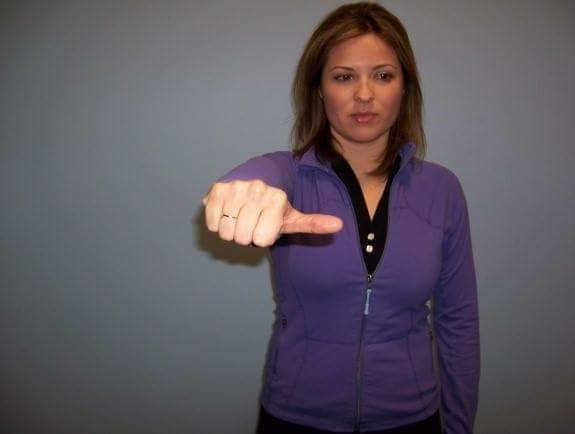
Barbell Bench Press Exercise Technique
Lie on a flat bench with your eyes directly under the bar. Keep the feet flat on the floor and your hands spaced slightly wider than shoulder-width apart. Lift the bar off the rack and slowly lower it to the highest point on the chest. Finish by exhaling, while driving the bar to a fully extended position.
Barbell Bench Press Exercise Muscle Test
Client Start Position
- Arms straight in front of the body
- 30-degree lateral off the midline (similar to the start position of the bench press shown above)
- Palms facing downward with the thumb facing in
Tester Start Position
- On the opposite arm side
- Body facing tested arm
- Forearm parallel to the floor
- Forearm perpendicular to arm
- Wrist between thumb and index finger
- Support shoulder with the other hand
- Client Direction of Force: Adduct (pull in) arm straight, medial to the midline.
- Tester Direction of Force: Abduct (push out) arm straight, lateral from the midline.
Strong Test – End Position
- Arm remains in the start position.
Weak Test – End Position
- Arm 90 degrees off midline.
When testing the exercise plane and range of motion after your treatment, you can now determine whether they are ready to start the exercise again or if more treatment and rehabilitation is needed.
Here are Dr. Ken’s closing remarks from the workshop.
I tried to keep this short, but there's so much to talk about. Join Dr. Ken at his next seminar on April 22 and 23, or even open up your calendar for the next SWIS 2018 (I heard a rumor it may be around November 8, 2018). You can also get access to his videos at swisdvd.com
Special thanks to Dr. Ken Kinakin for allowing me to use some of his content for this article and to the amazing job he does at living, learning, and passing on.










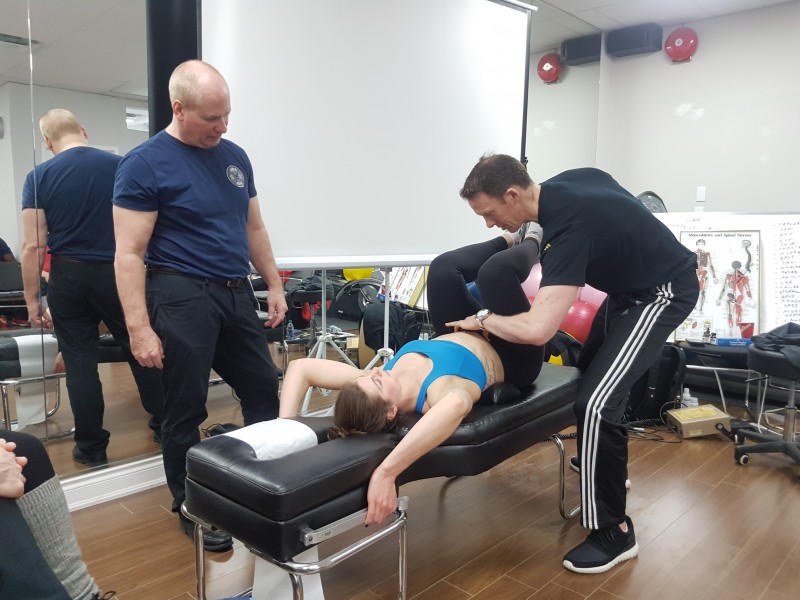
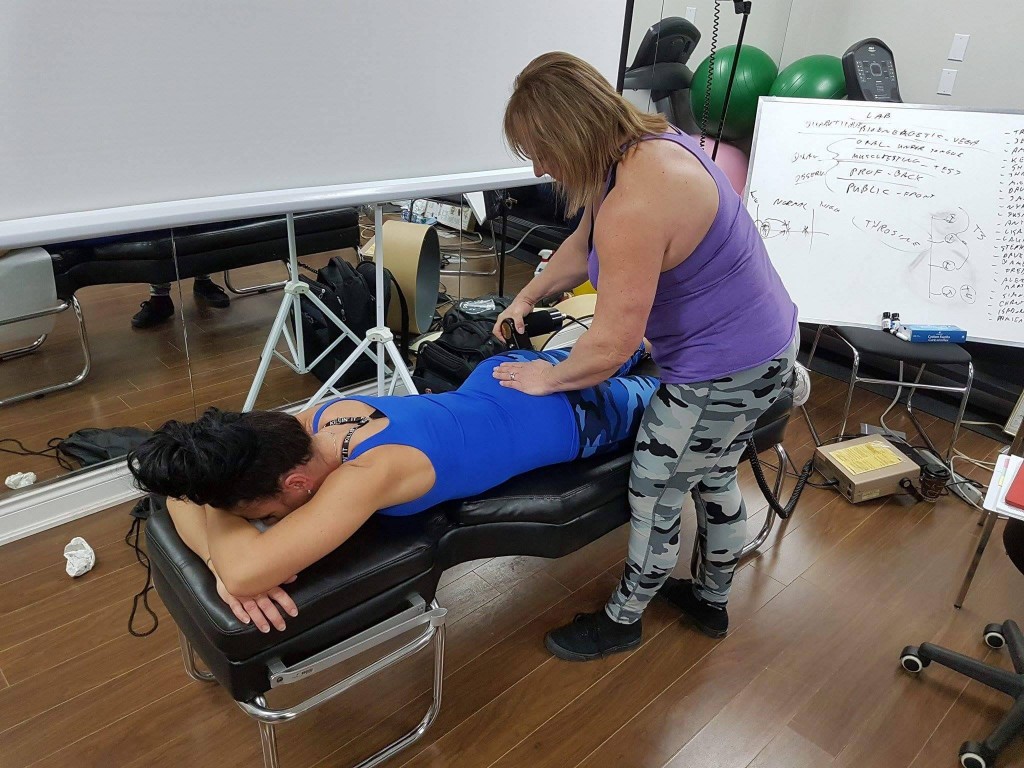
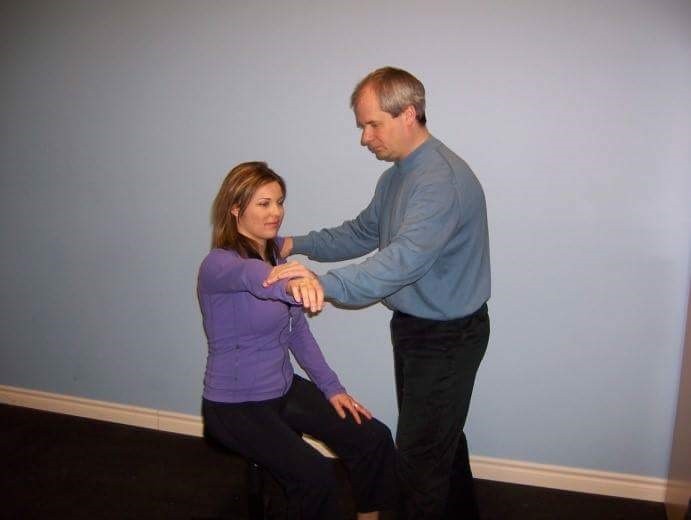
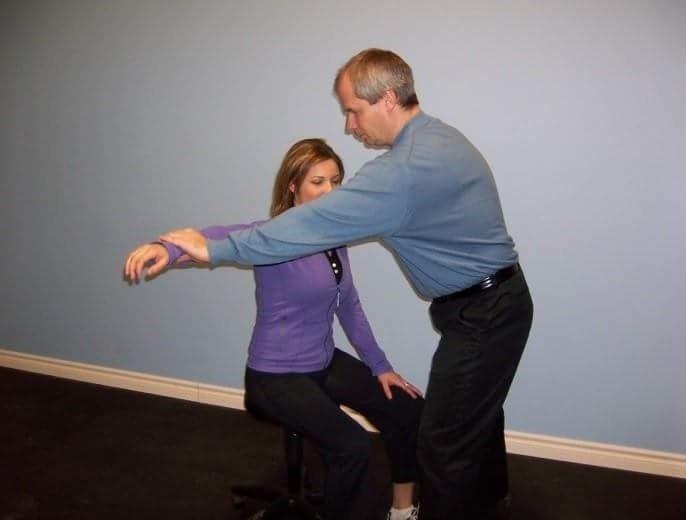
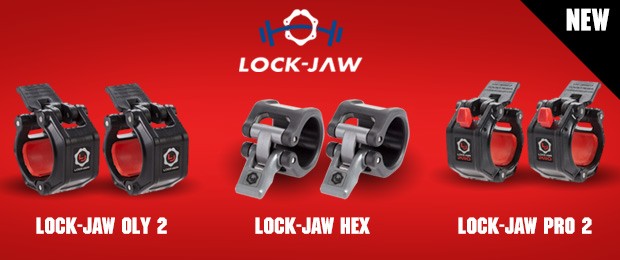
2 Comments